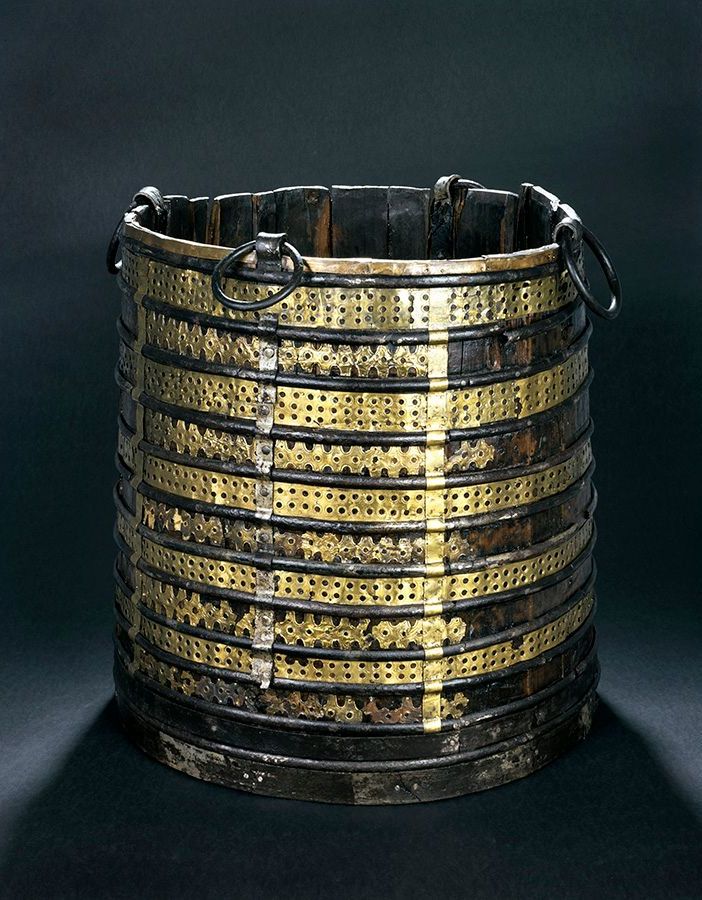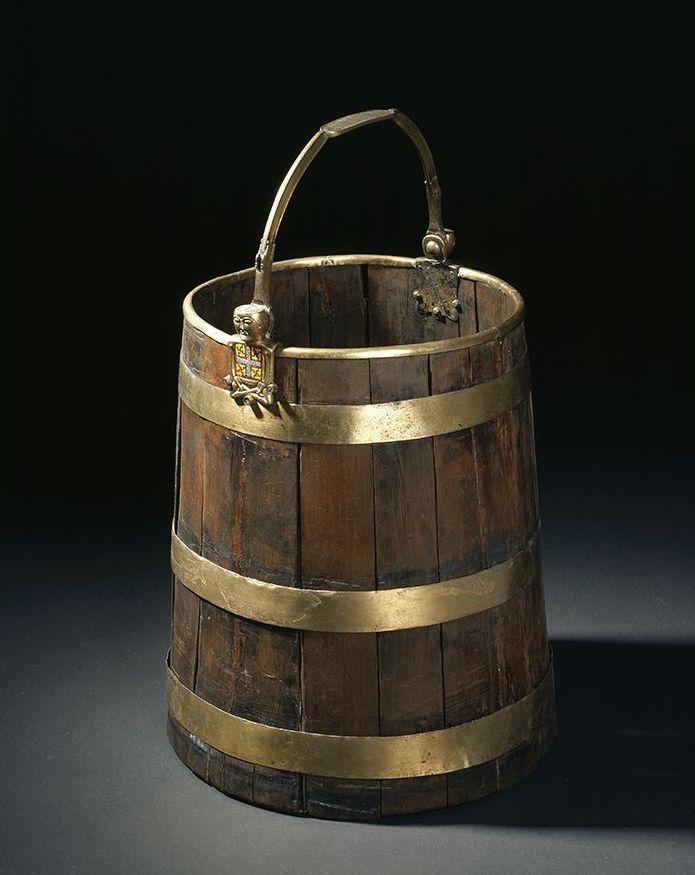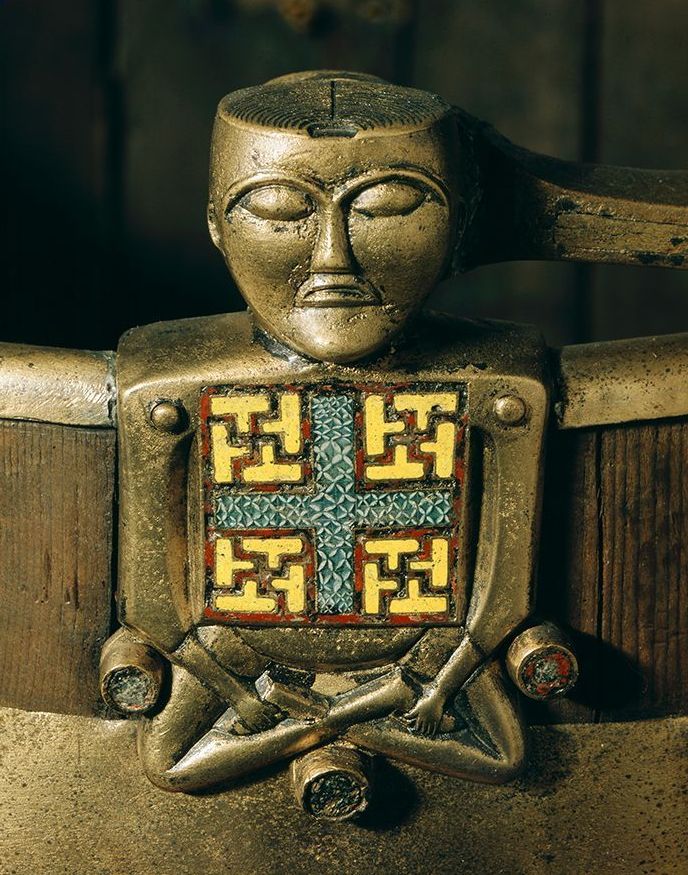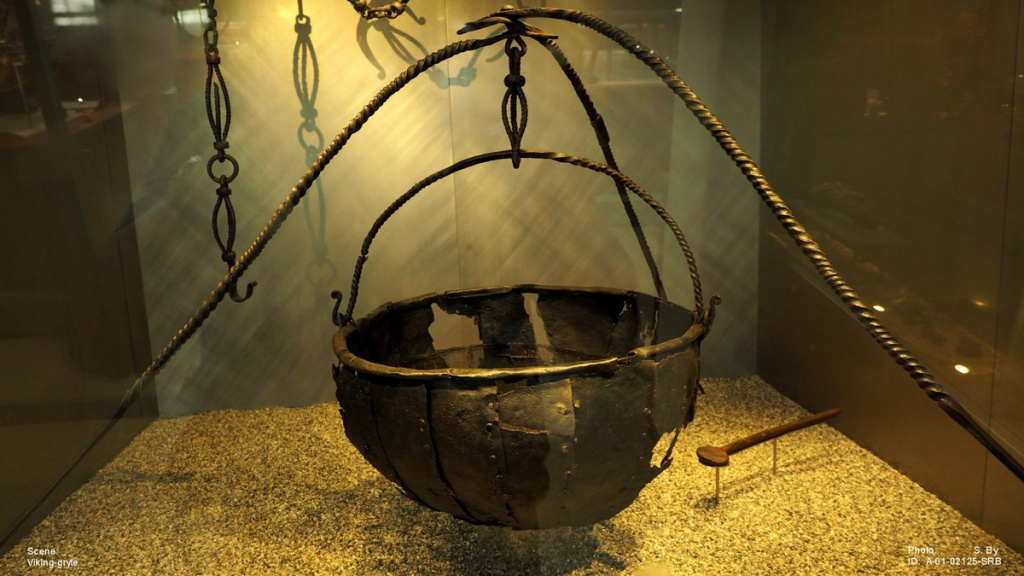Enough equipment to stock a kitchen was found during the Oseberg excavation. This might have been a symbol of power.
The elite showed their might through hosting great feasts and sacrificial events. Excavators found two iron pots of different size, one with a tripod. The iron pots might be a particular symbol of status and power.
Among the utensils found were also three whisks, five ladles of different sizes, two kitchen axes, an iron knife and a milk strainer. The dishes consisted of three small troughs, a few trays and a wooden bowl. The millstone for grinding flour consists of two circular stones with a hole in the middle, with the wooden lever intact.
Some buckets were among the equipment, including the Buddha-bucket. The name derives from the two Buddha-like figures on the handle. This likely came from Ireland and could be a proof of the Viking expansion of pillage and trade.
Viking women, including a large range of kitchen utensils.
(Photo: Kulturhistorisk Museum UiO).





